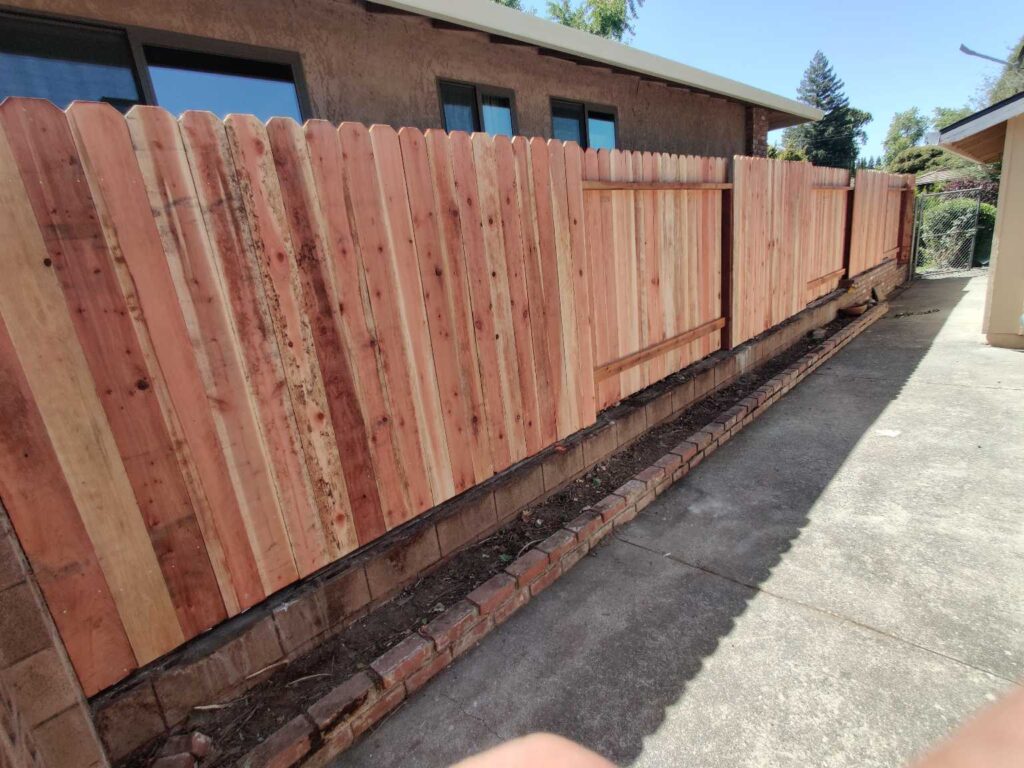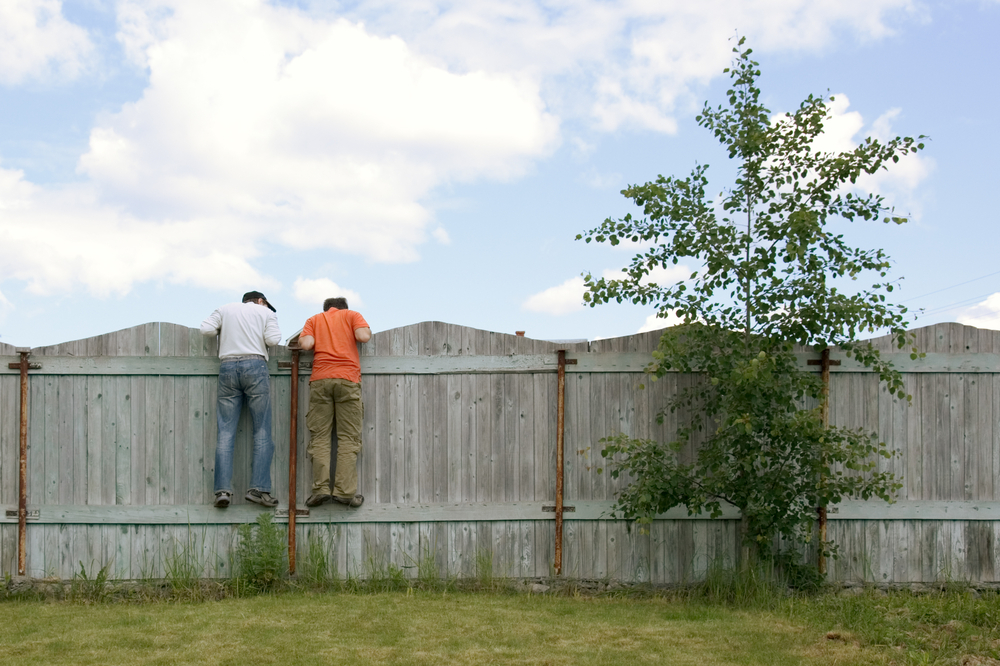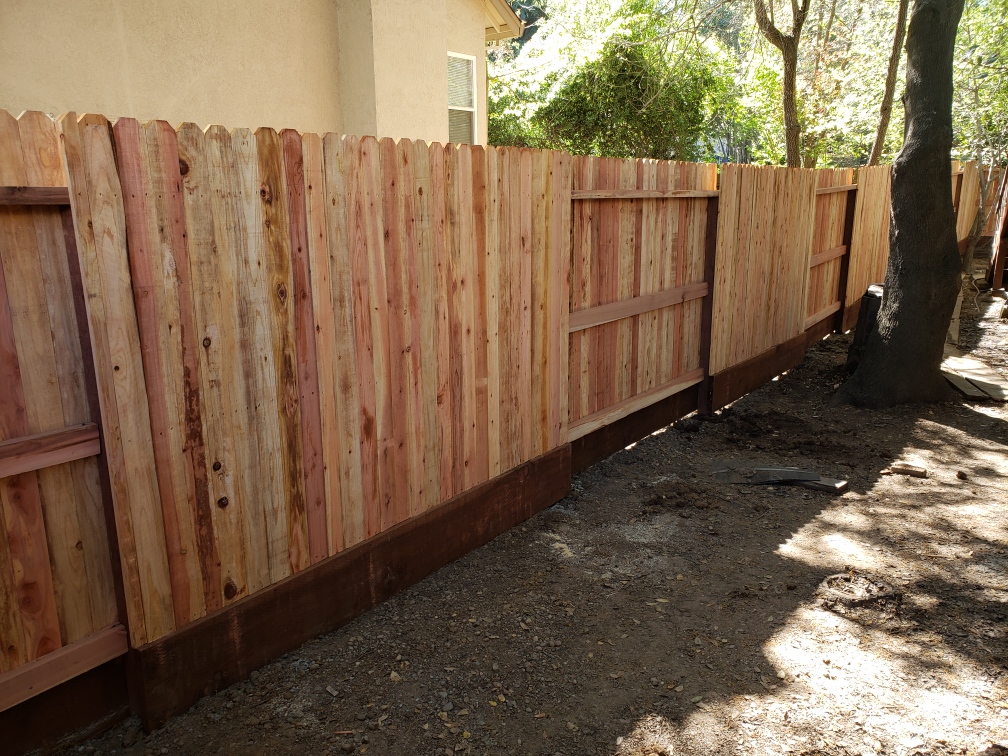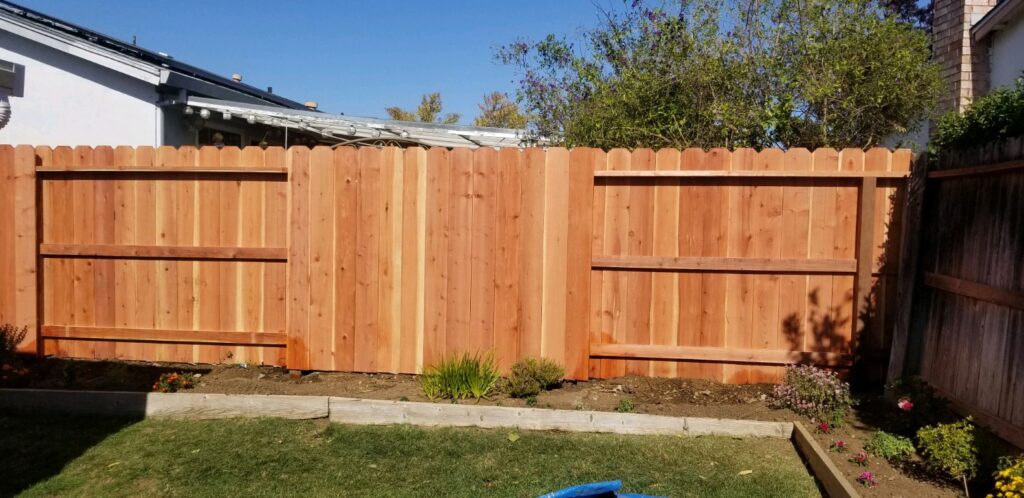Do you ever find yourself wondering about installing a fence on a shared property line? Maybe you’re curious about the rules and regulations or the best materials to use. Well, you’re in luck! In this article, we’ll dive into the ins and outs of installing a fence on a shared property line and answer all of your burning questions. Stay tuned to learn more!
When it comes to installing a fence on a shared property line, there are several factors to consider. First and foremost, it’s important to understand the legal aspects and regulations in your area. You’ll also want to decide on the type of fence that best suits your needs and budget. We’ll explore different fencing options, such as wood, vinyl, chain-link, and more, and discuss their pros and cons. Additionally, we’ll address common concerns like privacy, maintenance, and cost. By the end of this article, you’ll have a comprehensive understanding of everything you need to know about installing a fence on a shared property line. So, let’s get started and dive into the fascinating world of fencing!
Installing a Fence on a Shared Property Line
Installing a fence on a shared property line can be both challenging and rewarding. Whether you are looking to enhance privacy, security, or simply add aesthetic appeal to your property, installing a fence requires careful planning and consideration. In this guide, we will walk you through the essential steps and considerations when installing a fence on a shared property line.

Choosing the Right Fence Materials
The first step in installing a fence on a shared property line is to determine the right type of fence materials that will meet your needs. There are various options available, each with its own advantages and disadvantages.
Wooden Fences
Wooden fences are a classic choice that offers natural beauty and privacy. They can be customized to suit your style and are available in various designs and heights. However, wooden fences require regular maintenance and may be susceptible to rot and damage from insects.
Vinyl Fences
Vinyl fences are known for their durability and low maintenance requirements. They come in a variety of styles and are resistant to rot, rust, and pests. Vinyl fences are also easy to clean and can withstand harsh weather conditions. However, they may not offer as much privacy as wooden fences.
Aluminum Fences
Aluminum fences are a popular choice for their strength, versatility, and low maintenance. They come in different colors and styles and are resistant to rust and corrosion. Aluminum fences also provide an open and elegant look but may not offer as much privacy as other fence materials.
Chain Link Fences
Chain link fences are affordable and low maintenance options for securing your property. They are durable and provide visibility, which can be an advantage in certain situations. However, they may not offer much privacy and are not as aesthetically pleasing as other fence materials.
Wrought Iron Fences
Wrought iron fences are known for their elegance and durability. They add a sophisticated touch to any property and can provide enhanced security. However, wrought iron fences require regular maintenance to prevent rust and may be more expensive compared to other materials.
When choosing the right fence materials, consider factors such as your desired level of privacy, maintenance requirements, budget, and aesthetic preferences.
Considerations for Fence Height and Style
Before installing a fence on a shared property line, it is important to consider the appropriate height and style that will meet your needs while complying with local regulations and guidelines.
Safety and Security Considerations
Fence height plays a significant role in ensuring safety and security on your property. If you have children or pets, you may want to install a fence that is high enough to prevent them from easily accessing neighboring properties or busy streets. Additionally, taller fences can offer increased security by deterring intruders and preventing unauthorized entry.
Aesthetic Considerations
The style of your fence should complement the overall aesthetics of your property. Consider the architectural style of your home and choose a fence design that blends harmoniously. Whether you prefer a modern, traditional, or decorative style, there are various options available to suit your taste.
Local Regulations and Guidelines
It is crucial to research and understand local regulations and guidelines regarding fence height and style before proceeding with installation. Some areas may have specific restrictions on fence height, especially in shared property line situations. Contact your local municipality or homeowners’ association to ensure you are compliant with these regulations.

Determining the Property Line
Determining the property line is essential to avoid any disputes or encroachments when installing a fence on a shared property line. There are several methods you can use to accurately establish the property boundaries.
Hiring a Professional Surveyor
If you are unsure about the exact property boundaries, it is advisable to hire a professional surveyor. A surveyor will conduct a thorough survey of your property and neighboring properties, identifying and marking the boundary lines. This will provide you with an accurate reference point for installing your fence.
Using Existing Surveys and Maps
In some cases, existing surveys and maps may be available from previous land surveys or property documents. These can provide valuable information about the property lines and assist in determining the boundaries. However, it is recommended to consult with a professional surveyor to verify and confirm the accuracy of these documents.
Collaborating with Neighbors
When installing a fence on a shared property line, it is essential to communicate and collaborate with your neighbors. Discuss your plans for installing a fence and ensure that both parties agree on the location and design. Respecting your neighbors’ opinions and concerns can help maintain a positive relationship and avoid any potential conflicts.
Obtaining Necessary Permits and Permissions
Before starting the fence installation process, you may need to obtain permits and permissions from your local authorities. This ensures that your fence installation complies with local building codes and regulations.
Understanding Local Building Codes
Research and familiarize yourself with the building codes and regulations specific to your area. These codes may outline requirements for fence height, materials, setback distances, and construction standards. Adhering to these codes will help prevent potential issues and ensure a successful fence installation.
Applying for Permits
Contact your local building department to determine if a permit is required for your fence installation. Provide them with the necessary documentation, such as property surveys, design plans, and any other required information. Pay any required fees and wait for the permit approval before proceeding with the installation.
Obtaining Neighbor’s Consent
In some cases, obtaining your neighbor’s consent may be necessary before installing a fence on a shared property line. Discuss your plans with your neighbors and ensure that they do not have any objections or concerns. Keeping open lines of communication and collaborating on the fence installation can help minimize potential disputes.

Preparing the Site for Fence Installation
Preparing the site for fence installation is a crucial step to ensure a smooth and successful process. Proper preparation will help avoid any damage or obstacles that may hinder the installation.
Clearing Vegetation and Obstacles
Clear the fence line of any vegetation, debris, or obstacles that may interfere with the installation process. Trim back any overhanging branches or remove any plants and shrubs along the fence line. This will create a clear path for the fence installation and prevent any potential damage to the fence in the future.
Checking for Underground Utilities
Before digging any holes for fence posts, it is essential to check for the presence of underground utilities. Contact your local utility companies to come and mark the location of any buried cables, pipes, or wires. This will help prevent accidental damage and ensure the safety of both you and the utilities.
Measuring and Marking the Fence Line
Accurately measure and mark the fence line on your property, ensuring that it aligns with the determined property boundaries. Use stakes and strings to create a straight and even guideline for the fence installation. Taking the time to measure and mark the fence line accurately will result in a professional and aesthetically pleasing final product.
Tools and Materials Needed for Fence Installation
Before you start installing the fence, gather all the necessary tools and materials. Having everything prepared in advance will save you time and ensure a smooth installation process.
Basic Tools
- Measuring tape
- Level
- Shovel or post hole digger
- Hammer
- Screwdriver
- Drill
- Saw
- Safety equipment (gloves, goggles)
Fence Posts and Rails
- Fence posts (wood, vinyl, aluminum, or wrought iron)
- Rails (if applicable to your fence style)
- Concrete or gravel for post anchoring
Fasteners and Connectors
- Nails or screws
- Brackets or connectors
- Gate hardware (if installing a gate)

Setting Fence Posts
Setting fence posts properly is vital to the stability and longevity of your fence. Follow these steps to ensure accurate and secure post installation.
Digging Post Holes
Using a shovel or post hole digger, dig holes for the fence posts. The depth and diameter of the holes will depend on the fence type and local building codes. Typically, the holes should be at least 1/3 the height of the fence post and should extend below the frost line to prevent shifting.
Selecting and Mixing Concrete
For added stability, consider using concrete to set your fence posts. Mix the concrete according to the manufacturer’s instructions and pour it into the post holes. Ensure that the posts are level and plumb while the concrete sets. Allow the concrete to cure fully before moving on to the next steps.
Setting and Leveling Fence Posts
Place the fence posts in the post holes and ensure they are level and aligned with the established fence line. Use a level and adjust as necessary. Tamp the soil or concrete firmly around the posts to secure them in place. Repeat this process for all the fence posts along the property line.
Installing Fence Panels or Boards
Once the fence posts are set and secure, it’s time to install the fence panels or boards. Follow these steps to achieve a professional and even fence installation.
Attaching Fence Panels or Boards to Posts
Depending on the fence type, attach the fence panels or boards to the posts using brackets, connectors, or appropriate fasteners. Ensure that the panels are straight, level, and securely attached to the posts. Double-check the alignment and make any adjustments as necessary to maintain a consistent and visually appealing fence line.
Ensuring Even Spacing and Level Installation
While installing the fence panels or boards, pay attention to maintaining even spacing between each panel. This will help create a symmetrical and aesthetically pleasing appearance. Use a level to ensure that each panel is installed straight and level. Making minor adjustments during the installation process will result in a professional-looking fence.
Finishing Touches and Decoration
Once all the fence panels or boards are installed, inspect the entire fence for any loose or uneven sections. Secure any loose fasteners or panels, and make any necessary adjustments to achieve a visually appealing and structurally sound fence. Add any desired finishing touches or decorations, such as post caps or decorative elements, to enhance the overall look of your new fence.

Gate Installation and Access Points
If you require access to your property through the fence, installing a gate is necessary. Consider the following steps when installing a gate as part of your fence.
Choosing the Right Gate
Select a gate style and material that complements your fence and meets your functional requirements. There are various gate options available, including swing gates, sliding gates, and pedestrian gates. Consider factors such as accessibility, security, and aesthetics when choosing the right gate for your property.
Installing Gate Hardware
Install the necessary gate hardware, including hinges, latches, and locks. Ensure that the gate hardware is durable, secure, and suitable for the chosen gate style. Properly align the gate hinges and latches with the fence posts to ensure smooth operation and proper functioning of the gate.
Ensuring Proper Functioning and Security
Test the gate for smooth movement and proper alignment with the fence. Make any necessary adjustments to ensure the gate opens and closes smoothly. If security is a concern, consider adding additional measures such as a keypad entry system, intercom, or surveillance cameras to enhance security around the gate and property.
Maintaining and Repairing the Fence
Proper maintenance and repairs are essential to prolong the lifespan and appearance of your fence. Follow these guidelines to keep your fence in optimal condition.
Cleaning and Staining
Regularly clean your fence to remove dirt, debris, and mildew. Depending on the fence material, use appropriate cleaning solutions and methods. For wooden fences, consider staining or sealing the wood to protect it from moisture and UV damage. Follow the manufacturer’s instructions for proper application.
Repairing Damaged Sections
Inspect your fence regularly for any signs of damage, such as broken boards, loose posts, or damaged hardware. Repair any damaged sections promptly to prevent further deterioration. Replace any broken or rotted boards and tighten or replace any loose fasteners. For more extensive damage, consult a professional to ensure proper repairs.
Replacing Old or Worn-out Materials
Over time, certain fence materials may show signs of wear and require replacement. Determine if any sections of your fence need complete replacement due to aging, decay, or damage beyond repair. Consider upgrading to more durable materials or refreshing the overall look of your fence by replacing outdated components.
Dealing with Fence Disputes
Fence disputes can arise when installing a fence on a shared property line, so it is important to address any issues promptly and effectively.
Negotiating with Neighbors
If conflicts or concerns arise with your neighbors regarding the fence installation, try to resolve the issues amicably through open communication and negotiation. Listen to their concerns and work together to find mutually beneficial solutions. Remember that maintaining a positive relationship with your neighbors is essential for future interactions.
Mediation and Legal Options
If negotiations with your neighbors fail to resolve the fence dispute, consider seeking mediation or legal assistance. Mediators can help facilitate discussion and reach a compromise. In some cases, legal action may be necessary to resolve the dispute. Consult with a lawyer specializing in property law to understand your rights and options.
Resolving Common Fence-related Issues
Common issues that may arise in fence disputes include encroachments, shared maintenance responsibilities, and boundary conflicts. By understanding your local regulations, seeking legal advice if necessary, and communicating effectively with your neighbors, you can address these issues and prevent them from escalating.
Enhancing Privacy and Security with Fences
Privacy and security are commonly sought-after benefits of installing a fence. Consider these strategies to enhance privacy and security on your property.
Choosing Privacy-focused Fencing Options
For optimal privacy, consider choosing fence materials and designs that offer solid barriers. Wood or vinyl board-on-board fences, privacy slats for chain link fences, or tall shrubs and bushes planted alongside the fence can provide effective privacy solutions. Discuss your privacy needs with your neighbors to respect their privacy as well.
Adding Security Features to the Fence
If security is a concern, there are several features you can add to your fence to enhance protection. Install security cameras, motion sensor lights, or an alarm system to deter intruders. Ensure that the gate and any access points are secure and consider adding locked gates or keypad entry systems for added security measures.
Landscaping for Enhanced Privacy
In addition to the fence itself, strategic landscaping can further enhance privacy on your property. Planting trees, shrubs, or hedges along the fence line can provide additional privacy and create a more aesthetically pleasing environment. Consider the growth habits and maintenance requirements of the chosen plants to ensure they remain manageable over time.
Types of Specialty Fences and Their Uses
Specialty fences serve specific purposes and can be valuable additions to your property. Consider these types of specialty fences and their respective uses.
Pool Fences
If you have a pool on your property, it is essential to install a pool fence for safety reasons. Pool fences are designed to prevent accidental drownings and ensure compliance with local pool safety regulations. They are typically made of durable materials and have specific height and latch requirements to restrict access to the pool area.
Pet Fences
Pet fences are designed to keep your pets within the boundaries of your property and prevent them from wandering off or entering prohibited areas. They can be above-ground or underground systems that use electronic collars to train your pets to stay within designated areas. Pet fences ensure the safety of your pets while allowing them the freedom to play outdoors.
Farm and Livestock Fences
If you have a farm or livestock, installing appropriate fencing is crucial for containment and protection. Farm and livestock fences are designed to keep animals within designated areas and protect them from potential predators. They can be made of different materials depending on the type of livestock and the specific needs of the farm.
Conclusion
Installing a fence on a shared property line requires thorough planning, consideration of local regulations, and effective communication with neighbors. By choosing the right fence materials, determining property boundaries, obtaining necessary permits, and properly preparing the site, you can ensure a successful fence installation process.
Regular maintenance and repairs will help prolong the lifespan and appearance of the fence, while addressing any potential fence disputes promptly and effectively will help maintain positive relationships with neighbors.
Enhancing privacy and security, choosing specialty fences for specific purposes, and landscaping around the fence can further enhance the functionality and visual appeal of your property.
Remember, seeking professional advice and using quality materials are essential for a durable and aesthetically pleasing fence installation. Whether you decide to hire professionals or embark on a DIY project, a well-installed fence will contribute to the overall beauty and functionality of your property.